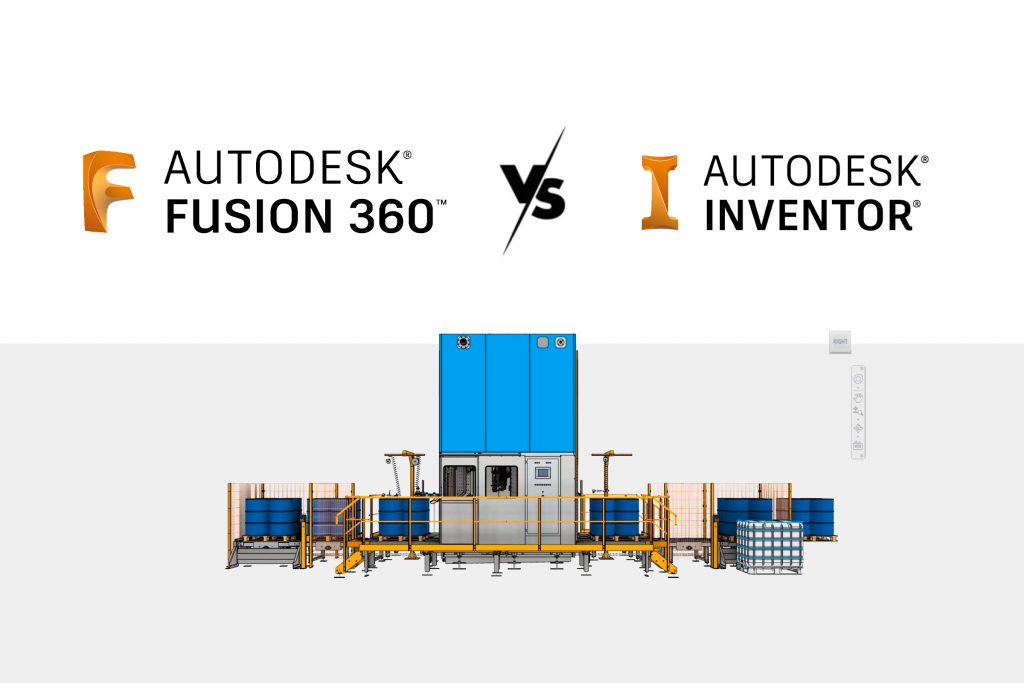Inventor and Fusion 360 are both popular three-dimensional modeling software platforms by Autodesk. Inventor is a computer-aided design (CAD) platform, while Fusion 360 combines CAD with computer-aided manufacturing (CAM) and computer-aided engineering (CAE) to offer an all-in-one solution.
If you’re looking to hire an Autodesk Fusion 360 expert, read on to learn more about Inventor and Fusion 360. Once you understand the differences and similarities between the two platforms, you can determine which one might be better for you.
What Is Autodesk Inventor?
Autodesk Inventor is CAD software that was launched two decades ago for professionals working on manufacturing and engineering projects. As a professional tool, Inventor is exceptional at designing products with many complex components.
What Is Autodesk Fusion 360?
As the name suggests, Fusion 360 combines multiple product design and manufacturing features by offering CAD, CAM, and CAE software on one platform. Fusion 360 was first released in 2013 and was designed for both professionals and hobbyists.
Fusion 360 offers numerous tools for design, manufacturing, rendering, and simulation. The company also has an option, Autodesk Fusion 360 for Startups, which might be of special interest if you have a new company to get off the ground.
Autodesk Fusion 360 Versus Inventor
Below is a comparison of six aspects of the two platforms to give you a better idea of the similarities and differences between Autodesk Fusion 360 and Autodesk Inventor.
1. System Requirements
Inventor: Autodesk Inventor requires Windows, but it can run on macOS if the computer has a Windows partition. In addition, Inventor requires a minimum of eight gigabytes RAM, with twenty gigabytes RAM recommended for optimal performance.
Fusion 360: Fusion 360 is more convenient because it runs on both macOS and Windows. It also only requires four gigabytes of RAM.
2. Features
Inventor: This tool automates designs and lets you run simulations on designed parts and assemblies. Inventor offers PCB interoperability, allows for data management through Vault, and lets users share designs through an online link for collaboration.
Fusion 360: Fusion 360 supports most product design and manufacturing processes by integrating CAD and CAM. It allows users to export files in a variety of formats, uses artificial intelligence and machine learning to support generative design, and offers cloud storage for work products.
3. User Interface
Inventor: Inventor is used more frequently for complex projects. As a result, the user interface (UI) is slightly more complicated than other applications. The UI has a light color, and boasts the following features:
- Quick Access Toolbar: To create new designs and perform operations such as save, export, undo, and redo
- File Menu: To provide the main menu options, such as modeling tools and sketching tools
- Browser: To show the different design files and history of the commands given and tools used
- Workspace: To display the currently opened design
- ViewCube: To choose a direction in which to view the project
- Appearance Tab: To let users pan, zoom, and orbit the design
Fusion 360: Fusion 360 is generally considered more beginner-friendly than Inventor. The UI also has a lighter color and more space between elements. The UI can be divided into the following features:
- Data Panel: To create, manage, and display projects
- Application Bar: To display the Data Panel access key
- Browser: To list all objects involved in the open design
- User Profile: To display the status of the design process, information about the software, and whether the user is online
- Toolbar: To select a workspace (such as Design, Render, or Animation)
- Canvas: To show the currently opened design
- ViewCube: To choose a direction in which to view the project
- Timeline: To show, in order, the processes that have been applied to the open design
4. Learning Curve
Inventor: Inventor is harder to learn than Fusion 360; however, it pays off in the long run if you’re hoping to design objects with many components.
Fusion 360: Although easier to use than Inventor, Fusion 360 does require time and effort to learn and master its many functionalities. Because it is used by both professionals and hobbyists, this tool is somewhat easier to use.
5. Cloud-Based Functionality
Inventor: Autodesk Inventor is a more traditional platform and does not offer cloud-based functionality.
Fusion 360: Fusion 360 is a cloud-based platform, allowing you to access your project from any device. It also lets you access projects in offline mode when you do not have internet connectivity. Plus, it simplifies collaboration and teamwork by providing multiple teams and users access to project data and editing in real-time.
6. Pricing
Inventor: While Autodesk Inventor offers free licenses for students, there are three subscription plans for other users:
- Monthly: $250
- Yearly: $1,985
- Three-Year Package: $5,360
- Fusion 360
Fusion 360: Fusion 360 offers a free 30-day trial and a free three-year license for students. For other users, the subscription costs are:
- Monthly: $60
- Yearly: $495
- Three-Year Package: $1,335
Final Thoughts
By understanding the similarities and differences between Inventor and Fusion 360, you can purchase the three-dimensional modeling software by Autodesk that best meets your needs. Of course, experts on both platforms are available for freelance work should you need extra help–check out Guru to find the perfect freelancer for you. From Autodesk Fusion experts to Thinkorswim programmers, you can find the expert you need on Guru.



